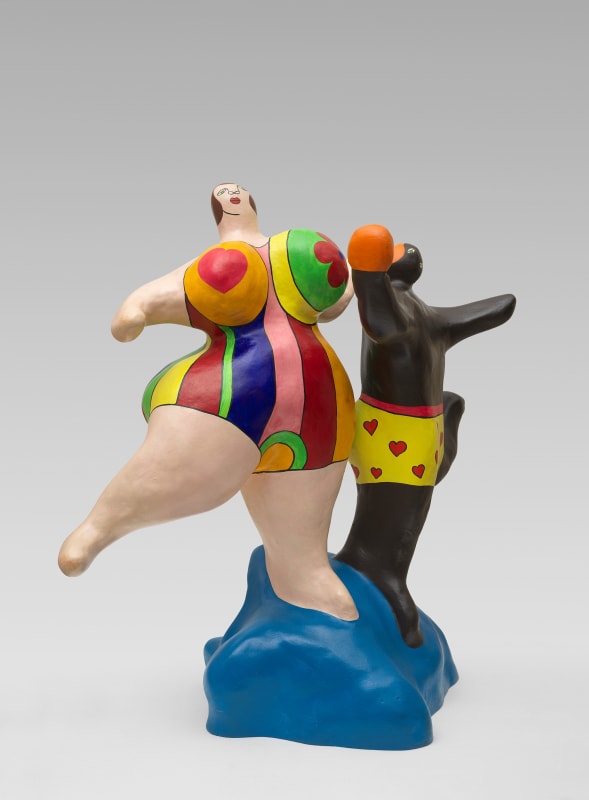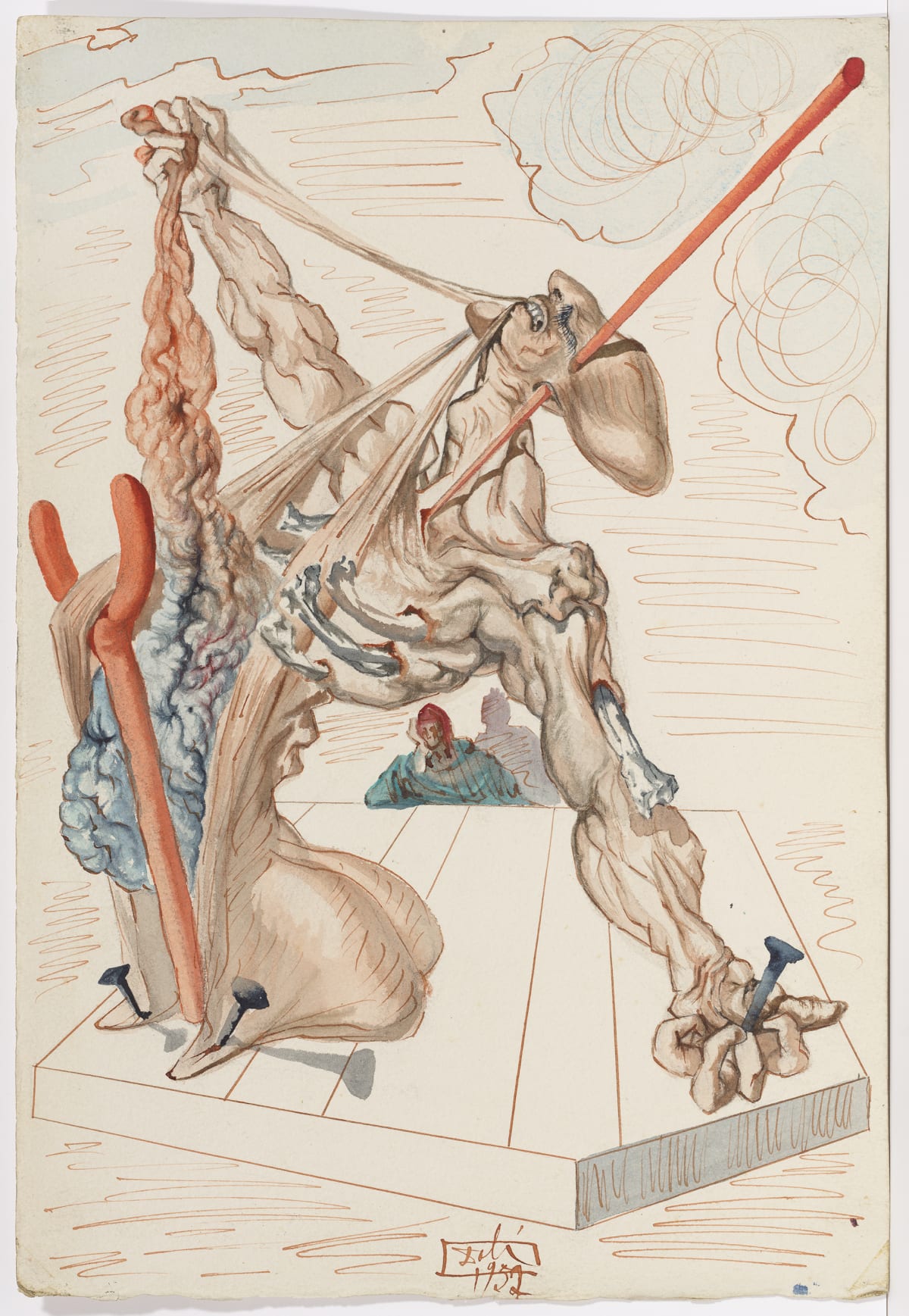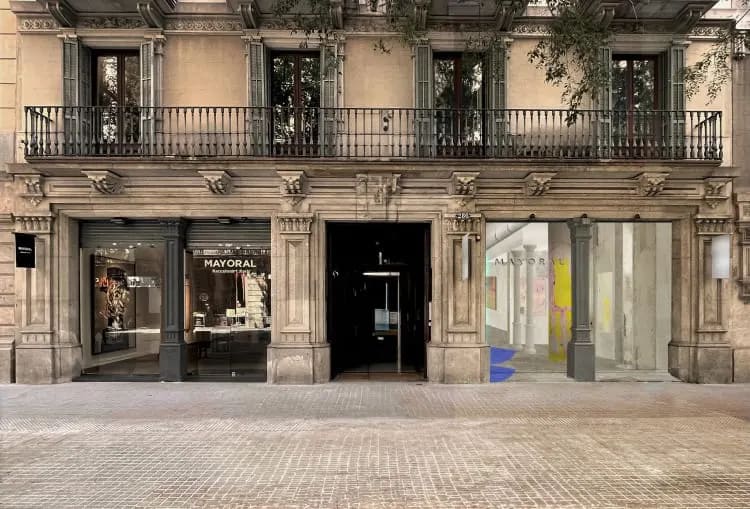Niki de Saint Phalle endured a difficult and traumatic childhood, along with a disrupted education—experiences she would later reflect on in her writings. After an early marriage and raising two children, she turned to art, initially working in a naïve, experimental style.
She first gained international attention for her provocative, violent assemblages, which were created by shooting firearms at canvases. Over time, her work evolved into the Nanas—playful, whimsical, and vibrantly colored large-scale sculptures of animals, monsters, and female figures.
Her most ambitious project, the Tarot Garden, was an expansive sculpture park featuring monumental, house-sized creations.
Often described as "outsider art," Saint Phalle's work was unconventional; she had no formal artistic training but engaged freely with contemporary artists, writers, and composers. Her books and letters were written in a bold, childlike style—both visually and in tone—yet she fearlessly tackled significant global issues with the directness often associated with childhood honesty.
Throughout her career, she collaborated with renowned artists such as Jasper Johns, Robert Rauschenberg, and Larry Rivers, as well as composer John Cage and architect Mario Botta. However, her most significant artistic partnership was with Swiss kinetic artist Jean Tinguely, who became both her close collaborator and second husband. Despite suffering from chronic health issues in her later years—likely due to prolonged exposure to toxic materials in her work—she remained creatively prolific until her death.
A critic once noted that Saint Phalle’s "insistence on exuberance, emotion, and sensuality, her pursuit of the figurative, and her bold use of color have not endeared her to everyone in a minimalist age." While widely recognized in Europe, her work remained relatively obscure in the U.S. until her later years in San Diego. Another critic described her as "one of the most significant female and feminist artists of the 20th century, and one of the few to achieve recognition in the male-dominated art world during her lifetime."







